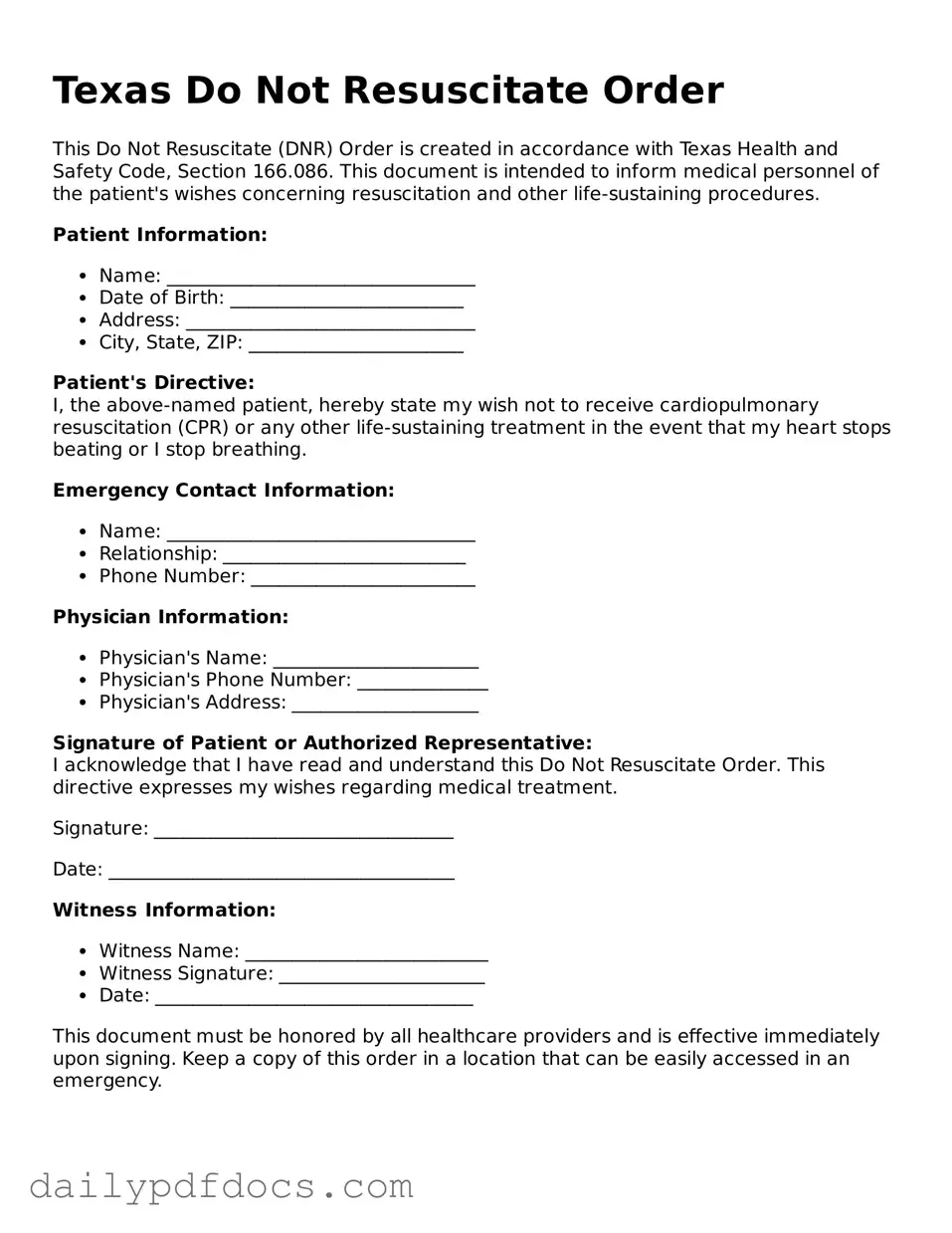What is a Texas Do Not Resuscitate Order (DNR) form?
A Texas Do Not Resuscitate Order (DNR) form is a legal document that allows a person to refuse cardiopulmonary resuscitation (CPR) in the event of cardiac arrest. This form is intended for individuals who have a terminal illness or a medical condition that significantly limits their life expectancy. By completing this form, a patient can express their wishes regarding resuscitation efforts, ensuring that their preferences are respected by medical personnel in emergency situations.
Who can complete a DNR form in Texas?
In Texas, a DNR form can be completed by a competent adult who is at least 18 years old. Additionally, a parent or legal guardian may complete the form on behalf of a minor. If the individual is unable to make decisions due to a medical condition, an authorized representative can also sign the DNR form. It’s important to ensure that the person completing the form understands its implications and has discussed their wishes with their healthcare provider.
How do I obtain a Texas DNR form?
You can obtain a Texas DNR form from various sources, including healthcare providers, hospitals, and online resources. The Texas Department of State Health Services provides a downloadable version of the form on its website. It is essential to use the official state form to ensure it meets legal requirements. Once you have the form, fill it out completely and sign it in the presence of a witness, as required by Texas law.
What should I do with my completed DNR form?
After completing the DNR form, it is crucial to keep it in a place where it can be easily accessed by medical personnel. Many individuals choose to carry a copy in their wallet or purse. Additionally, you should provide copies to your healthcare provider, family members, and anyone else involved in your care. Make sure to inform your loved ones about your wishes and where they can find the form in case of an emergency.
Can I change or revoke my DNR order?
Yes, you can change or revoke your DNR order at any time. To do so, you must destroy the original DNR form and notify your healthcare provider and family members about your decision. If you wish to create a new DNR order, complete a new form following the same process as before. It’s important to ensure that your current wishes are clearly communicated and documented to avoid any confusion during medical emergencies.
